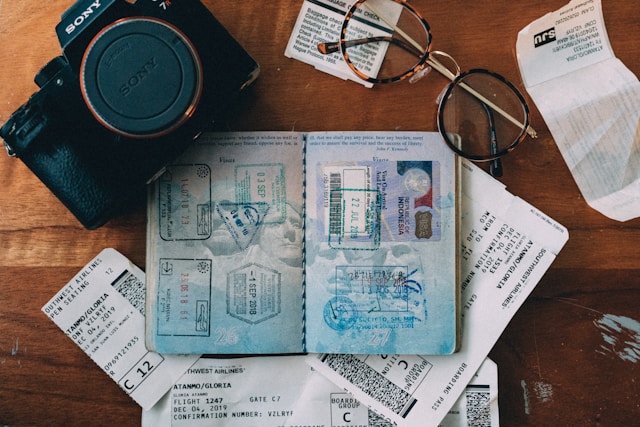CBD has now become a go-to source for people to deal with a variety of wellness issues. It’s scientifically proven for its calming and pain-relieving properties, and with every passing day, more and more people are now adopting it into their wellness routine.
It’s good and effective for people of all age groups, especially adults who have hectic schedules. Just popping a few 25 mg CBD gummies before bed can help adults improve both their recovery and sleep quality and also keep their stress and anxiety levels in check.
CBD is also a good alternative to traditional opioid-based pain medications and doesn’t make the user dependent or addicted. So let’s learn more about CBD’s health benefits for adults and how they can safely take it to improve their quality of life.

What Is CBD?
Cannabidiol, or CBD, is a natural plant compound called cannabinoid and is found mainly in Cannabis sativa plants. All your favorite CBD products, including gummies, oils, lotions, and softgels, are prepared from cannabinoid extracts extracted from hemp plants.
There are hundreds of cannabinoids, but in hemp plants, CBD has the highest concentration. It’s one of the most widely researched and used cannabinoids and is popular for its healing and soothing effects on our nervous system.
It doesn’t have any intoxicating effects, which makes it perfect for consuming anytime, anywhere. Getting anxious before a presentation? Take some CBD oil. Feeling tired and sore after a workout?
Pop some gummies. More and more money is now being spent on research on CBD, and so far, plenty of studies and trials have proven its effectiveness. Plus, you can’t really overdose on it easily, and it hardly produces serious side effects.
CBD is now available in so many forms and types that people of all ages see it as a lucrative option to improve their overall wellness.
Why Is CBD Good For Adults? How Can It Help Them?
Being an adult comes with its own set of challenges, rewards, and a whole lot of tiredness, fatigue, and some pain. CBD can help adults relax, rejuvenate, recover, and feel better instead of facing burnout every other day.
Let’s learn about CBD’s benefits for adults in detail.
Improve Sleep
Taking CBD before bed can tremendously improve your sleep quality. It does so by calming your nerves and reducing your stress and anxiety levels. It also helps in curbing any racy thoughts and helps your body relax and slide into a restful sleep.
These days, brands like Colorado Botanicals offer special CBD sleep gummies that come loaded with other sleep-improving stuff like melatonin and lemon balm. It’s also a good option for adults suffering from insomnia, as noted and confirmed by this 2023 systematic review.
Neuroprotective Benefits
According to the World Health Organization, over 3 billion humans suffer from some sort of neurological condition. These can develop during both the childhood and adult phases of life and make life miserable, especially as one grows older.
Some recent studies show that CBD administration can help people deal with a range of neurological conditions, including epilepsy, Parkinson’s disease, Huntington’s disease, autism spectrum disorder, complex motor disorders, Ptsd, and more.
In fact, Epidolex has become the world’s very first FDA-approved CBD-based prescription medication for severe epilepsy cases.
Help You To Relax
Yep, this may not sound much, but most of the adults just want to come back from their work, slide into their pajamas, and wind down. In this fast-paced world, it’s quite hard for one to relax.
Taking CBD regularly can allow your body to be stress-free, without pain, and in a pure state of relaxation.
Consider full-spectrum CBD products, as they produce an even stronger entourage effect due to the presence of all the cannabinoids, phytonutrients, and terpenes present in them.
Improve Recovery
CBD has anti-inflammatory and pain-relieving properties. It can work as a great post-recovery supplement, and help you manage the pain caused by delayed onset muscle soreness.
During the workout, it may enhance blood oxygen absorption which can lead to increased efficiency. In fact, the World Anti-Doping Agency has also removed CBD from it’s controlled substance list, and many athletes now use it after strenuous workouts.
Improve Sex Life
Many adults suffer from performance issues in bed, mainly due to pressure, too much excitement, or stress.
Though CBD doesn’t have a direct correlation with enhanced libido, many adults confirm that taking it before the act helps them to focus and relieve anxiety. This in turn leads to a better connection with the partner, more focus, and an overall good experience.
How Does CBD Work In The Body?
So all this chatter about CBD is everywhere, but how exactly does it work? Well, the answer is quite simple, actually. We humans and all other mammals have an endocannabinoid system inside us that is spread throughout the body.
It consists of cannabinoid receptors, which interact with our body’s own cannabinoids called anandamide and 2-AG. This interaction is essential to maintaining a state of balance in our body.
This whole process dictates our anxiety levels, stress response, appetite, memory, sleep cycles, and many other biological processes.
CBD simply makes this whole process even more efficient by targeting both cannabinoid and non-cannabinoid receptors. That’s why, after taking it, we feel more relaxed, less anxious, and in better control of our bodies.
Are There Any Side Effects Of CBD In Adults?
As per data from multiple human trials and anecdotal reports, it’s evident that CBD is generally well tolerated by the human body, even at higher doses. Still, there can be some cases in which a person might feel a bit drowsy, fatigued, restless, and nauseated.
These side effects are quite rare, usually go away within a few hours, and don’t require any medical intervention. Still, it’s recommended to start your CBD journey with a low dose and to increase your water intake.
Pregnant and breastfeeding women should also stay away from it, as there’s not enough data to conclude how it affects a child’s health. So if you feel any of the above-stated effects, just reduce your dosage, increase your water intake, or maybe take a short break.
The End Note
To sum it up, yes, CBD is good for adults. It can do wonders for their mental and physical health through its healing and therapeutic properties. It can help adults with a large number of disorders related to anxiety, sleep, and pain issues.
It’s completely nonintoxicating in nature, so whether you are at home or in the workplace, you can take it without worrying about getting high or dizzy. Unlike chemical-ridden medications for pain and anxiety, CBD is a completely clean, green, organic, and healthy alternative.
Just make sure that you buy it only from reputed and authentic places like Colorado Botanicals. Also, always cross-check the label data with third-party lab reports before putting those delicious gummies in your shopping cart.










